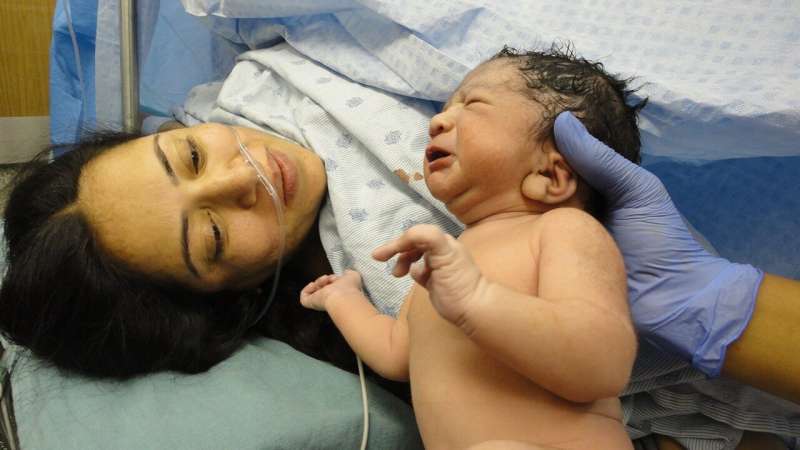This article has been reviewed according to Science X's editorial process and policies. Editors have highlighted the following attributes while ensuring the content's credibility:
fact-checked
peer-reviewed publication
trusted source
proofread
Lifesaving childbirth blood loss intervention is highly cost-effective, finds 78-hospital analysis

A lifesaving package including early detection and bundled treatment for women who have heavy bleeding during childbirth has been found to incur minimal additional cost according to new analysis from 78 hospitals around the world.
In a paper published in Nature Medicine today, a team of researchers working on the E-MOTIVE trial conducted an economic analysis to establish whether a package of interventions to objectively identify and treat post-partum hemorrhage (PPH) was cost effective.
Over 200,000 women from hospitals across four countries in Africa were included in the economic analysis of E-MOTIVE, with hospitals being randomly assigned to either the intervention or usual care groups. The intervention resulted in more than 1,000 fewer PPH cases compared to the usual care group. The additional cost for E-MOTIVE was estimated to be—on average—an extra $0.30 per patient after adjustments for clinical factors including the proportion of patients with a clinical primary outcome event at each hospital, as well as for cluster and time-period considerations. .
The economic analysis explored a range of costs for a key component of the E-MOTIVE package, which is a calibrated blood collection drape, used for all women in the intervention group, and used to objectively measure blood loss. The analysis found that when the cost of the drape is around US $1, the average cost per patient could be comparable to usual care.
Tracy Roberts, Professor of Health Economics at the University of Birmingham and corresponding author of the study, said, "E-MOTIVE is clearly a cost-effective intervention for what is a lifesaving treatment for thousands of women around the world who may experience severe bleeding in childbirth. Our analysis of the E-MOTIVE trial shows that the costs incurred in delivering the package of treatments and the drape are on average minimal and represent really good value for money.
"The drape forms a key part of the E-MOTIVE package, and should E-MOTIVE be widely adopted and the cost of drapes reduced to below $1, the economic benefits could be even more apparent. The cost of delivering the E-MOTIVE intervention could then be—on average—equivalent to usual care, which would represent a significant health benefit for women around the world."
60% reduction in heavy bleeding
E-MOTIVE being found cost-effective comes after the publication of a landmark study published that found a 60% reduction in heavy bleeding for women experiencing PPH.
Postpartum hemorrhage (PPH)—defined as the loss of more than 500 mL of blood within 24 hours after birth—is the leading cause of maternal mortality worldwide. It affects an estimated 14 million women each year and results in around 70 000 deaths—mostly in low and middle-income countries—equivalent to 1 death every 6 minutes.
The study found that objectively measuring blood loss using a simple, low-cost collection device called a drape and bundling together WHO-recommended treatments—rather than offering them sequentially—resulted in dramatic improvements in outcomes for women. Severe bleeding—when a woman loses more than a liter of blood after birth—was reduced by 60%, and they were less likely to lose their lives.
There was also a substantial reduction in the rate of blood transfusions for bleeding, which is of particular importance in low-income countries where blood is a scarce and expensive resource.
Professor Arri Coomarasamy, who led the E-MOTIVE trial and is the Co-Director of the WHO Collaborating Centre on Global Women's Health at the University of Birmingham said, "This new approach to treating postpartum hemorrhage could radically improve women's chances of surviving childbirth globally, helping them get the treatment they need when they need it.
"Time is of the essence when responding to postpartum bleeding, so interventions that eliminate delays in diagnosis or treatment should be gamechangers for maternal health. With this latest study showing that E-MOTIVE is extremely cost effective and following WHO recommending the treatment bundle, we hope that the intervention can quickly become the standard of care that will save many lives around the world."
More information: A cost-effectiveness analysis of early detection and bundled treatment of postpartum hemorrhage alongside the E-MOTIVE trial, Nature Medicine (2024). DOI: 10.1038/s41591-024-03069-5





















